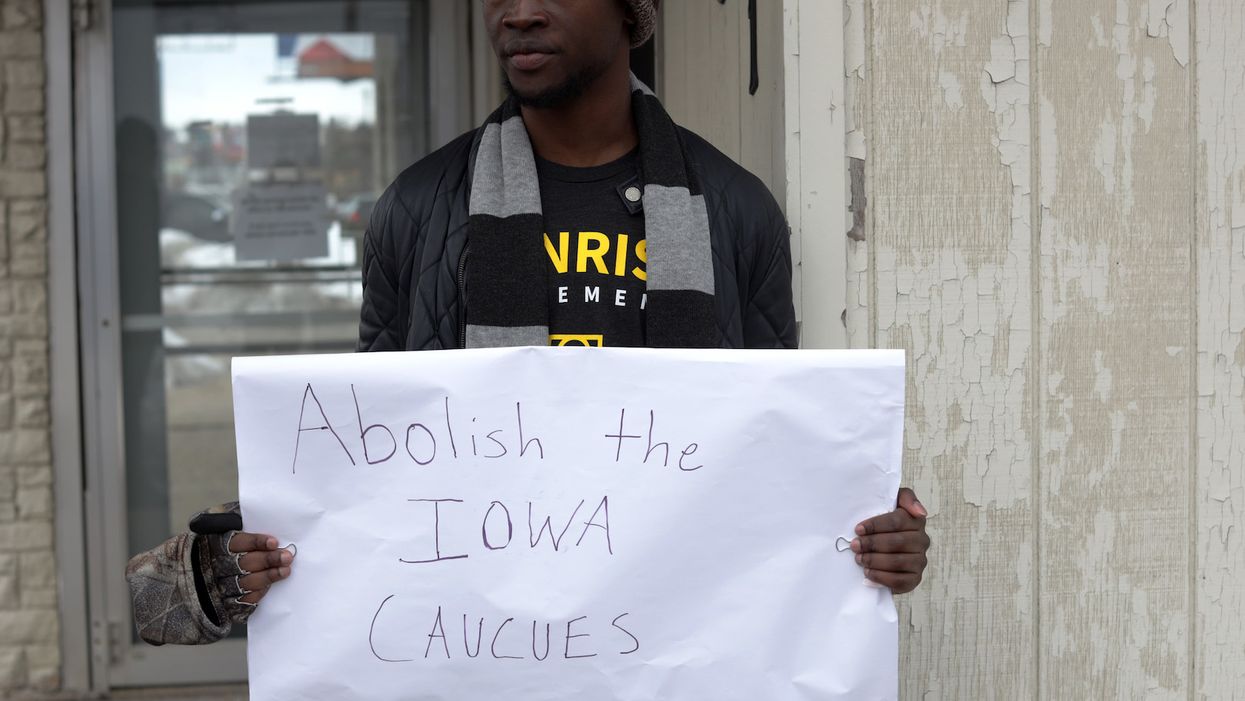
Local resident Wallace Mazon holds a sign outside the Iowa Democratic Party headquarters on Tuesday in Des Moines, Iowa. (Photo by Alex Wong/Getty Images)

How can the results ever be trusted?
We almost have all the results from the Iowa Democratic caucus — but we have little reason to trust that they are accurate, according to an analysis by the New York Times.
Caucuses entail a lot of moving around, and a lot of manual data collection and entry. Combine that with some new rules and a faulty smartphone app, and you get a lot of errors — errors that could be the difference between winning and losing for Sen. Bernie Sanders (I-Vt.) and former Mayor Pete Buttigieg of South Bend, Indiana.
"The results released by the Iowa Democratic Party on Wednesday were riddled with inconsistencies and other flaws," Nate Cohn, Andrew Fischer, Josh Katz, Denise Lu, Charlie Smart and Ben Smithgall reported for the Times. "According to a New York Times analysis, more than 100 precincts reported results that were internally inconsistent, that were missing data or that were not possible under the complex rules of the Iowa caucuses."
"In some cases, vote tallies do not add up. In others, precincts are shown allotting the wrong number of delegates to certain candidates," the report continued. "And in at least a few cases, the Iowa Democratic Party's reported results do not match those reported by the precincts."
To summarize, the results are wrong in so many different ways that it may be impossible to ever produce a truly accurate tally of who won the Iowa caucuses.
The Iowa Democratic Party relies on precinct officials to record and validate results. Then, the IDP reports what it gets from the precincts. The problem is, there is significant evidence that many precinct officials didn't know what they were doing. Here are some examples of types of detected errors: